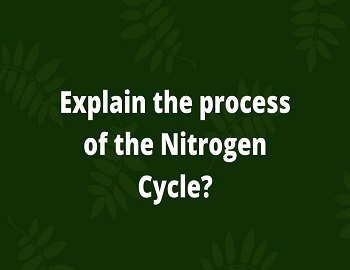Table of Contents
What is meant by the term Osmoregulation?
It is the maintenance of water and osmotic concentration of blood (osmolality) in an animal. Different animals have the capacity to adjust themselves to different salt concentrations of water. The kidneys help in maintaining osmoregulation in mammals by excreting hypotonic or hypertonic urine depending upon the availability of water and salt in the blood.
The aquatic animals like fishes consume a sufficient amount of water and in turn, they excrete out hypotonic urine than the plasma of blood in order to remove the excess of water.
Man and birds consume small amount of water and obviously, hypertonic urine is excreted out which is more concentrated than the blood plasma. Similarly, in case of excessive loss of water due to profuse sweating in summer months or due to excessive bleeding, a hypertonic urine is passed out to minimize the loss of water with urine from the body.
Regulation of Water Content:
There are two cases for water regulation- excess and shortage.
Excess of Water:
It is regulated in two ways- Increased Ultrafiltration and Decreased Reabsorption.
Increased Ultrafiltration:
Excess of water in the body fluids increases blood volume that increases the hydrostatic pressure which increases the rate of ultrafiltration and more nephric filtrate is filtered out from the glomerular capillaries into Bowman’s capsule.
Decreased Reabsorption:
Water is mainly reabsorbed through collecting tubules. The permeability of the wall of DCT (distal convoluted tubule) and collecting tubules is controlled by antidiuretic hormone (ADH) or Vasopressin released from the posterior lobe of the pituitary gland. An increase in the water level in the body fluids is noted by osmoreceptor cells of the hypothalamus of the brain. These cells signal the posterior lobe of the pituitary gland to stop the secretion of ADH. A low level of ADH in the blood lowers the permeability of the wall of DCT and collecting tubules which decreases reabsorption of water from them. So the nephric filtrate becomes more and more hypotonic and finally, a large amount of hypotonic urine is excreted out and the volume of body fluids becomes normal.
Shortage of Water:
When the volume of body fluids decreases below normal due to excessive bleeding, profuse sweating during heavy muscular exercise or high temperature, prolonged delay in intake of fluids, then the reverse occurs. The rate of ultrafiltration is decreased due to decreased blood volume and low hydrostatic pressure of blood in glomerular capillaries. Simultaneously, the receptor cells of the hypothalamus send messages to the pituitary gland to release ADH which increases the permeability of the wall of DCT and collecting tubules. This increase reabsorption of water and continued reabsorption of Na+ makes interstitial fluid hypertonic and this also favors reabsorption of water. Reabsorbed water passes to particular capillaries.
Less ultrafiltration and more reabsorption produce a small amount of hypertonic urine thus increasing the volume of body fluids to normal.
Regulation of Na:
It is the major Na+ in the ISF and regulates osmotic concentration as well as blood pressure. It is a must for nerve impulse transmission in animals. Thus, Na must be reabsorbed in the nephrons.
When Na is in large amount:
When it is in a larger amount in the glomerular filtrate, it is reabsorbed under the influence of aldosterone hormone from the adrenal cortex of the adrenal gland.
When Na is in less amount:
When Na+ is in less amount in IFS, it stimulates the special cells of afferent arteriole i.e. Juxtaglomerular cells, secretes renin (Proteinous in nature). Renin converts angiotensinogen (produced by the liver) into Angiotensin. It stimulates the adrenal cortex to produce more and more aldosterone. Aldosterone acts upon the ascending limb as well as the distal convoluted tubule to increase the reabsorption of Na.
Role of ANF (Atrial Natriuretic Factor) in Osmoregulation:
Atrial Natriuretic Factor (ANF) is a polypeptide hormone secreted by the cardiac muscles of the wall of the atria of the heart. It is secreted in response to increased blood volume and blood pressure. It is antagonistic to RAAS (Renin-Angiotensinogen-Aldosterone System) and inhibits the release of renin from the juxtaglomerular cells so reduces the secretion of aldosterone and reabsorption of NaCl of nephric filtrate into the interstitial fluid.
So ADH, RAAS, and ANF regulate the functioning of kidney tubules by feedback mechanisms to regulate the osmolarity, salt concentration, blood pressure, and blood volume, called homeostasis.









Comments (No)